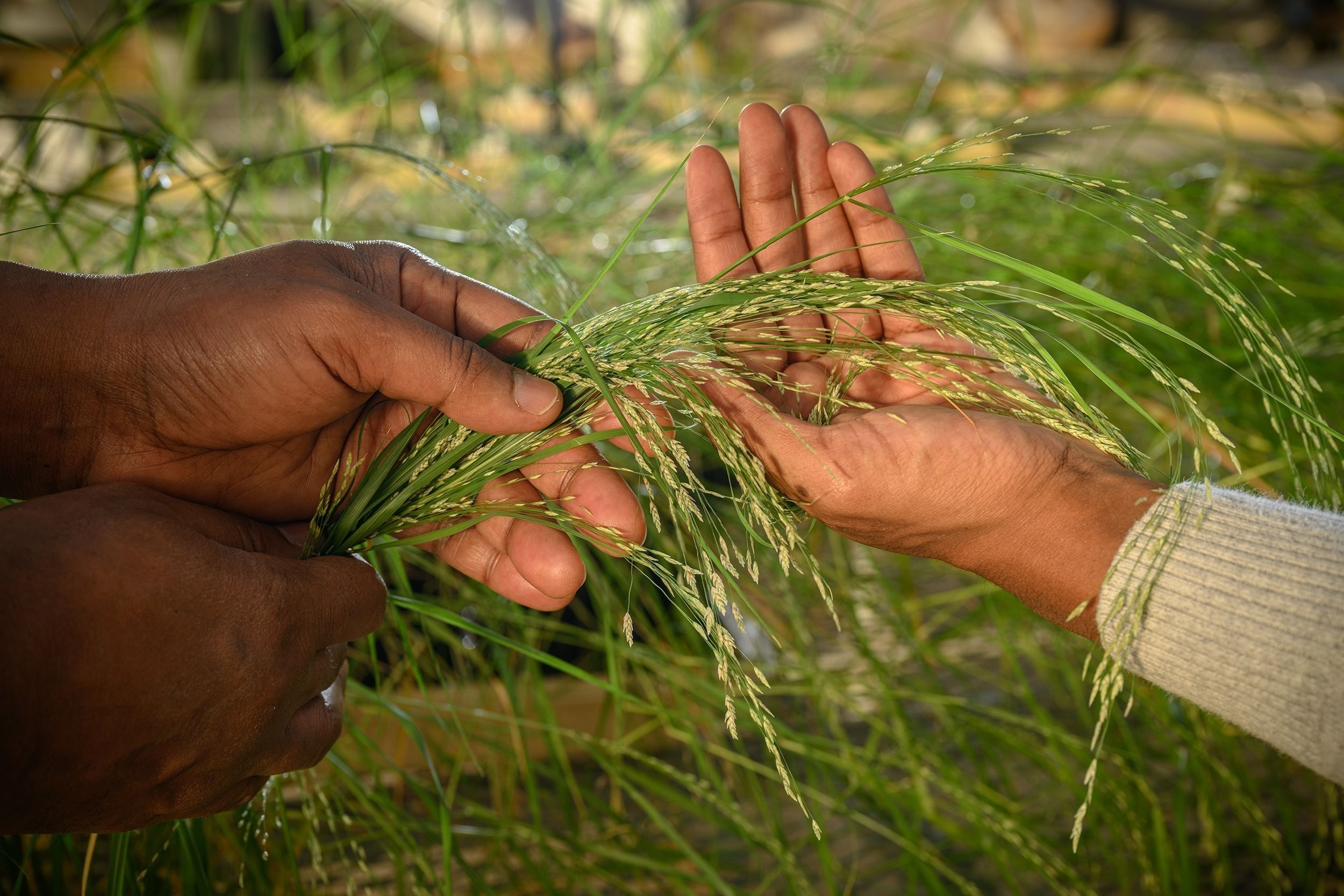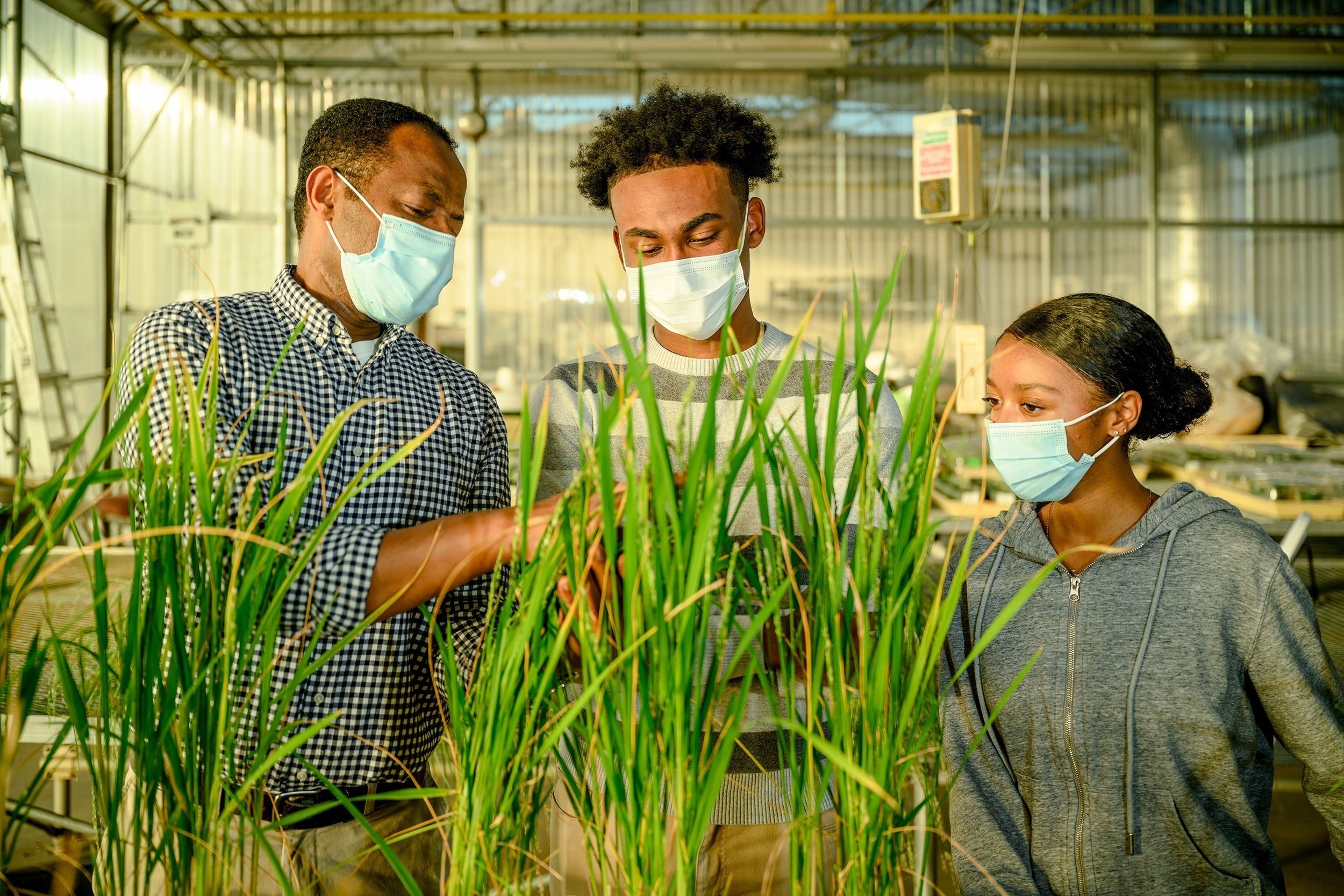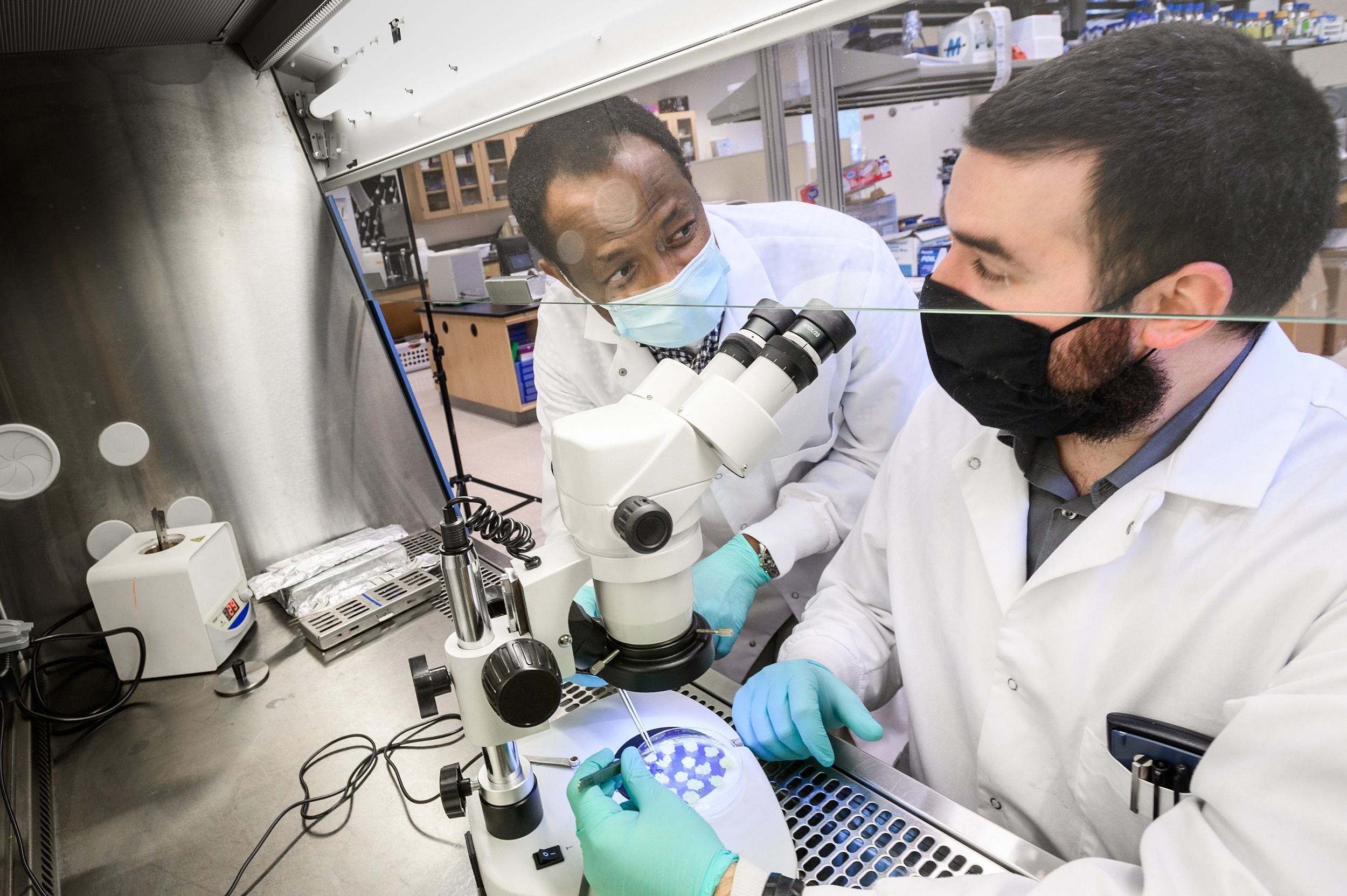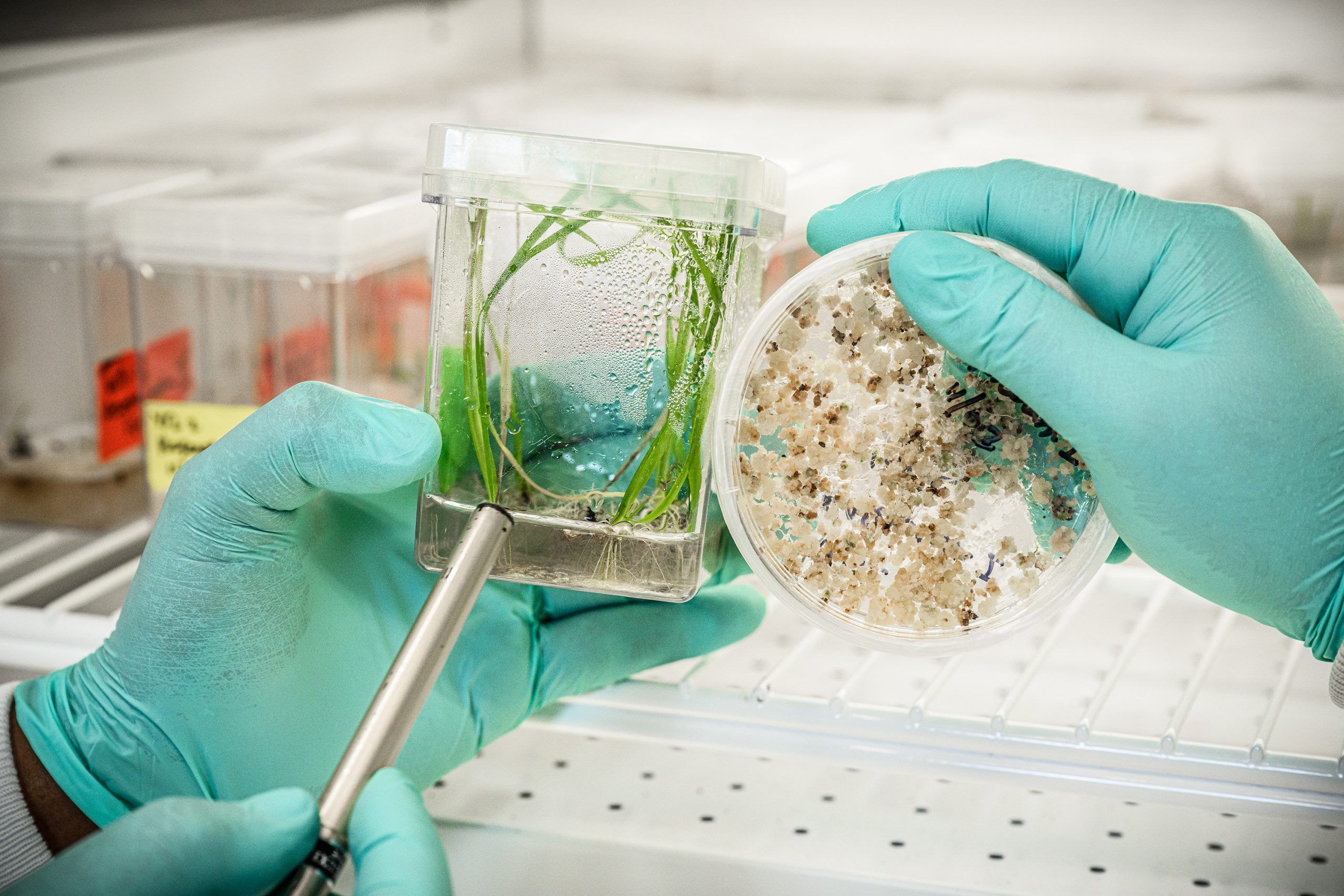Dr. Ayalew Ligaba Osena grew up on a farm in Ethiopia, where his family raised crops including tef – a grain that’s vital to his home country.
Today, as a plant physiologist and molecular biologist at UNCG, Osena is working to unlock the secrets of this versatile and largely unknown crop.
Eragrostis tef, commonly known as tef or teff, is an annual grass crop that produces a tiny seed about 150th of the size of a wheat grain. The plant is native to Ethiopia, where it’s a staple food crop that’s ground into flour to make fermented, spongy flat bread known as “buddeena” in Osena’s native language Afan Oromo or “injera” in Amharic.
Tef has gained a foothold in the United States, where it is mostly grown as a forage grass to feed animals. But as an orphan crop – one that isn’t produced globally – it gets scant attention from scientists and funding agencies.
“Tef is a very interesting crop,” Osena says. “It has many essential traits, but also challenges.”
Among tef’s benefits: It’s packed with essential minerals like calcium, iron, and manganese, and vitamins and amino acids. It’s gluten-free, low in sugar, and high in fiber. It thrives in most soil types and tolerates most weather conditions.
Dr. Osena’s research group brings the latest advances in molecular biotechnology to food crops to address issues of nutrition, health, and food security.
In his three years at UNCG, Osena has mentored more than 25 undergraduates, providing them with the opportunity to participate in advanced molecular biotechnology research.
Photo 1 above: tef cultivated in the UNCG Research greenhouse | Photo 2 above: Osena in the greenhouse with Staples and Lyons (left to right)
With support from an NIH MARC U-STAR fellowship, senior Jade Lyons is working with Osena to improve the vitamin content of the root vegetable cassava. Senior Colt Russell and sophomore Daniel Staples are on projects to develop more heat-tolerant crops, with the help of genes from heat-loving species of archaea and red algae.
Photo 1 above: Osena and Russell (right) examine cassava calli, or calluses, which are embryogenic and can be used for genetic transformation | Photo 2 above: genetically modified rice samples
But tef is temperamental. It’s susceptible to lodging – tef’s slender stalks can bend before the plant matures. The seeds can also shatter – dropping right off the plant before it’s threshed. Both conditions can dramatically reduce yields, which are already extremely low compared to wheat, corn, and other staple U.S. crops.
Osena intimately knows the challenges of tef. As a child, he spent untold hours with traditional hand tools tending to his family’s crop, before and after long walks to and from school. Now, as a researcher whose studies have taken him from Ethiopia to Germany, to Japan, and to America, he hopes to develop technologies to help tef growers globally.
“Using human cell studies, in collaboration with Cornell University, we showed that iron stored in tef is more bioavailable than that of wheat and rice grains. About 3.5 ounces of tef bread should meet the NIH-recommended daily iron intake for adults aged 19-50.”
“About 3.5 oz. of tef bread should meet the NIH-recommended daily iron intake for adults aged 19-50.”
Working with UNCG biologist Dr. Zhenquan Jia and chemist Dr. Nicholas Oberlies, he has found that tef grain extracts have antioxidant properties in human cells, meaning the grains might relieve oxidative stress and impact diseases like diabetes, cardiovascular disease, and cancer. This year, he received $427,800 in National Institutes of Health funding to further investigations of tef grains and tef straw, which could have benefits on human and animal health, respectively.
Osena also is investigating the genetic mechanism by which tef plants acquire minerals from soil and store them in seeds. Findings here could lead to the transfer of tef genes into other more widely consumed grains such as rice, wheat, and corn, to increase their mineral content.
As more people in the United States discover the benefits of tef, Osena hopes it will attract more research funding and growers. “To meet current demands from over 323,000 Ethiopian and Eritrean immigrants in the U.S. – as well as people on gluten-free and low-glycemic index diets – we’re importing the grain,” he says.
“With recent advances in molecular genetics and genomics opening new avenues for researchers, tef deserves more attention.”



